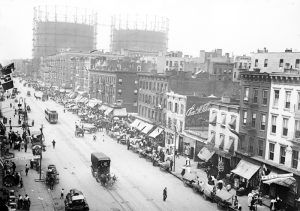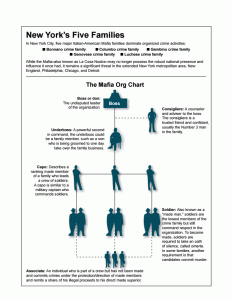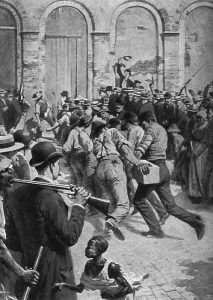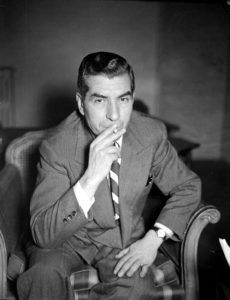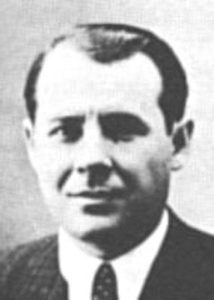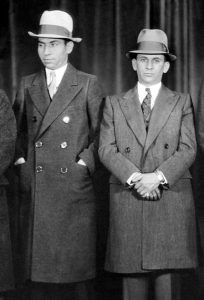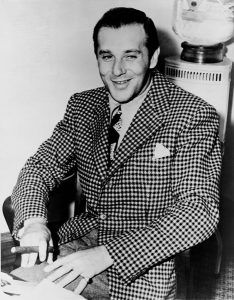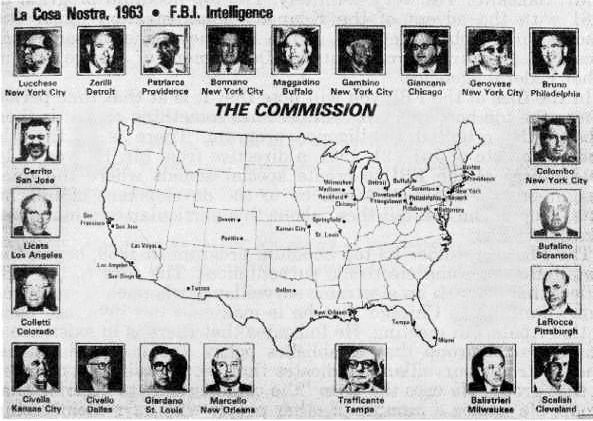The Cosa Nostra, also known as the “Mob” or the “Mafia,” evolved from the Sicilian Mafia and is one of the foremost organized criminal threats to American society. Referred to by the U.S. Government as La Cosa Nostra, and its members as just Cosa Nostra, which, translated to English, means “this thing of ours” or “our thing.” Consisting of different “families,” this nationwide alliance of criminals is dedicated to pursuing crime and protecting its members.
These crime families or groups, linked by blood ties or through conspiracy, are generally arranged geographically and are engaged in significant and organized racketeering activity. They are also involved in a broad spectrum of illegal activities, including murder, extortion, drug trafficking, public officials’ corruption, gambling, legitimate businesses’ infiltration, labor racketeering, loan sharking, prostitution, pornography, tax fraud schemes, and stock manipulation.
Cosa Nostra is most active in the New York City metropolitan area, parts of New Jersey, Philadelphia, Detroit, Chicago, and New England. The major families in the New York City area include the Bonanno, Colombo, Gambino, Genovese, and Lucchese families. At times, members and associates of one La Cosa Nostra family work together with other La Cosa Nostra families to undertake criminal ventures jointly.
Within these families, individuals work together on “crews” that are led by a “capo” or “captain,” who is responsible for supervising the criminal activities of his crew and providing them with support and protection. The crews are composed of “made” members, called “soldiers,” and trusted non-members, called “associates.” For an associate to become a “made member” of the Family, the associate must be of Italian descent and has demonstrated the ability to generate income for the Family and the willingness to commit acts of violence. Above the Capos are the highest-ranking members – the Boss or Acting Boss, the Underboss, the Consigliere, or the counselor – who oversee the Family.
Although Cosa Nostra has its roots in Italian organized crime, it has been a separate organization for many years. Today, it continues to cooperate in various criminal activities with different criminal groups headquartered in Italy.
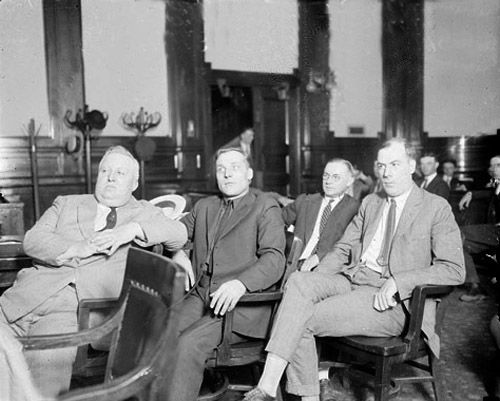
Teamsters Union representatives in a Chicago Courtroom. Sitting at right, Tim Murphy was a politician, union organizer, and reputed gangster. He was murdered in 1928.
One of its most significant sources of profit, power, and influence is labor racketeering, where it seeks to dominate, manipulate, and control a labor movement to affect related businesses and industries. Labor unions provide a rich source for organized criminal groups to exploit, including their pension, welfare, and health funds. The Mafia attempts to control these plans by offering “sweetheart” contracts, peaceful labor relations, and relaxed work rules to companies or rigging union elections. Labor law violations occur primarily in large cities with solid industrial bases and strong labor unions, like New York, Buffalo, Chicago, Cleveland, Detroit, and Philadelphia. These cities also have a significant presence of organized crime figures. FBI investigations over the years have clearly demonstrated that labor racketeering costs the American public millions of dollars each year through increased labor costs that are eventually passed on to consumers.
The FBI works closely with other government agencies to investigate labor law violations, including electronic surveillance, undercover operations, confidential sources, and victim interviews. The one event that did more than anything to curb organized crime was the passage of the Racketeer Influenced and Corrupt Organizations Act (RICO) in 1970. This act made the agencies more productive because they could attack the entire corrupt entity instead of imprisoning individuals, who could easily be replaced with other organized crime members or associates.
Early Beginnings:
Giuseppe Esposito was the first known Sicilian Mafia member to emigrate to the U.S. He and six other Sicilians fled to New York after murdering the chancellor and a vice chancellor of a Sicilian province and 11 wealthy landowners. He was arrested in New Orleans, Louisiana, in 1881 and extradited to Italy.
New Orleans was also the site of this country’s first major Mafia incident. On October 15, 1890, New Orleans Police Superintendent David Hennessey was murdered execution-style. Hundreds of Sicilians were arrested, and 19 were eventually indicted for the murder. An acquittal generated rumors of widespread bribery and intimidated witnesses. Outraged citizens of New Orleans organized a lynch mob on March 14, 1891, and killed 11 of the 19 defendants. Two were hanged, nine were shot, and the remaining eight escaped.
The American Mafia has evolved as various gangs assumed and lost dominance. Some of the first were the Black Hand gangs around 1900, the Five Points Gang in New York City in the 1910s and 1920s, and Al Capone’s Syndicate in Chicago in the 1920s.
During the Prohibition era of the 1920s, the Italian Mafia families began waging wars for absolute control over lucrative bootlegging rackets. They fought with the Irish and Jewish ethnic gangs for control of bootlegging. By the end of the decade, two Italian groups had emerged to fight for control of the criminal underworld across the country. One group was led by Joe Masseria, the boss of what is now known as the Genovese crime family, and the other by Salvatore Maranzano, who led a group that would become the Bonanno crime family. The rivalry escalated into the bloody Castellammarese War, which lasted from February 1930 to April 15, 1931. The war ended when Salvatore Maranzano conspired with Masseria’s top soldier, Charles “Lucky” Luciano, to have Masseria killed.
Maranzano then emerged as the most powerful Mafia boss in the nation and called himself the “Boss of Bosses.” Maranzano divided New York City into five families, established the code of conduct for the organization, and established procedures for resolving disputes. He named Charles “Lucky” Luciano the head of what would later be known as the Genovese family.
However, Maranzano’s top role would be short-lived. Maranzano believed in upholding the supposed “Old World Mafia” with principles of honor, tradition, and respect, refused to work with non-Italians, and preferred to work only with Sicilians. Luciano, along with several other younger Italian mobsters, thought working only with Italians limited the growth of their personal careers and the potential growth of the criminal empires. These men, known as the “Young Turks,” wanted to work with Jewish and Irish gangsters as long as there was money to be made.
Marazano soon viewed Luciano as a threat and ordered a hit on him. However, Luciano found out about the plan and struck first on September 10, 1931, when several mobsters killed Marazano in his office in the New York Central Building.
With the help of his longtime friend, Meyer Lansky, Lucky Luciano established a power-sharing arrangement called “The Commission,” a group of five Mafia families of equal stature, to avoid such wars in the future. The other commission leaders included Joseph Bonanno, Joseph Profaci, Tommy Gagliano, and Vincent Mangano. Afterward, all organized crime activities in the 1930s were decided by this commission. The Commission is still reported to exist today, including the bosses of the Five Families of New York City and the Chicago Outfit.
After Prohibition ended in 1933, the organized crime groups lost the high profits they had acquired throughout the 1920s. They soon expanded into other ventures, such as labor racketeering through control of labor unions, construction, loan sharking, extortion, protection rackets, sanitation, transportation, prostitution, and drug trafficking.
By the 1950s, several Mafia bosses had made legitimate investments in legalized casinos in Las Vegas, Nevada, where they skimmed cash before it was recorded. The amount is estimated to have been hundreds of millions of dollars.
Operating in the shadows, the Mafia faced little opposition from law enforcement for years, as local law enforcement agencies did not have the resources or knowledge to combat organized crime committed by a secret society effectively they were unaware existed.
It wasn’t until 1951 that a U.S. Senate committee determined that a “sinister criminal organization,” later known as La Cosa Nostra, operated in this nation. Six years later, The New York State Police uncovered a meeting of prominent La Cosa Nostra figures from around the country in the small upstate New York town of Apalachin. Many of the attendees were arrested. The event was the catalyst that changed how law enforcement battles organized crime.
In 1963, Joe Valachi became the first Mafia member to turn state evidence and provide detailed information about the inner workings and secrets of the organization. Afterward, the Federal Bureau of Investigation began an aggressive assault on the Mafia’s National Crime Syndicate. Though this created more pressure on the Mafia, it did little to curb their criminal activities.
However, the Mafia’s influence in the Las Vegas economy began to dwindle when the Nevada State Legislature passed a law that made it easier for corporations to own casinos in 1969. The U.S. Congress passed the RICO Act a year later, giving law enforcement more authority to pursue the Mafia for its illegal activities. Success was made by the beginning of the 1980s when the FBI was able to rid Las Vegas casinos of Mafia control and determined to loosen the Mafia’s stronghold on labor unions.
Between 1981 and 1992, 23 mafia bosses from around the country were convicted under the RICO law. Over 1000 crime family figures were convicted by 1990. While this significantly crippled many Mafia families around the country, the most powerful families continued to dominate crime in their territories.
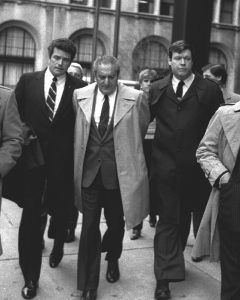
Gambino Family Boss Paul Castellano was arrested in 1985. After he was released on bail, he was killed by other mob members.
By the 21st century, the Mafia has continued to be involved in a broad spectrum of illegal activities, including extortion, corruption of public officials, gambling, infiltration of legitimate businesses, labor racketeering, loan sharking, and more. Today, most of its activities are confined to the Northeast and Chicago.
The structure of La Cosa Nostra has not changed since the 1930s, and Cosa Nostra, in various forms, has existed for over 100 years.
© Kathy Alexander/Legends of America, updated February 2024.
Also See:
Gangsters, Mobsters & Outlaws of the 20th Century
Prohibition in the United States
Sources:
American Security Today
Federal Bureau of Investigation
Smithsonian Magazine
Wikipedia


